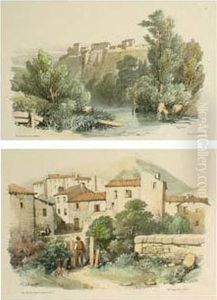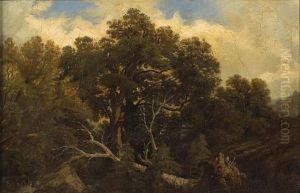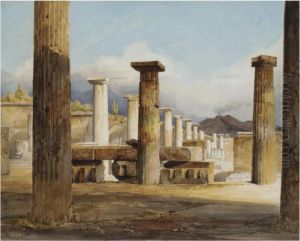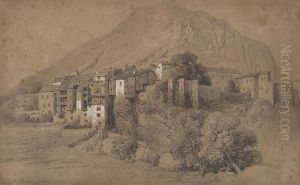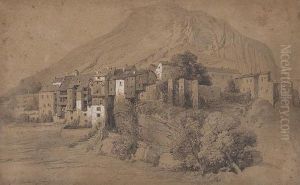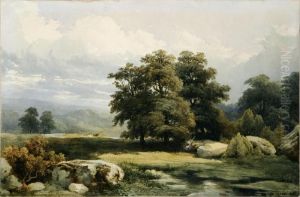Jean-Baptiste Louis Hubert Paintings
Jean-Baptiste Louis Hubert, often known simply as Louis Hubert, was a French artist born in 1757 in Paris. While not widely recognized today among the most prominent artists of his time, Hubert was an accomplished painter whose works reflect the artistic trends and influences of the late 18th and early 19th centuries in France.
Louis Hubert's early life and education in the arts remain somewhat obscure, but it is known that he was active during a period of great turmoil and change in France, which included the French Revolution and the Napoleonic Wars. He would have been trained in the neoclassical style that dominated French art at the time, a style characterized by a return to classical subjects and an emphasis on harmony, clarity, and strong lines.
During his career, Hubert would have likely been influenced by the works of Jacques-Louis David, the preeminent French painter of the era and a strong proponent of the neoclassical style. Hubert's own paintings, however, have not been as extensively documented or studied as those of his more famous contemporaries.
Hubert lived through the French Revolution and its aftermath, a period that saw significant changes in the art world, including the rise of Romanticism. However, it is unclear to what extent these events directly influenced his work. The lack of comprehensive records about his exhibitions or patronage makes it difficult to fully assess his impact on the art of his time.
Jean-Baptiste Louis Hubert died in 1822. While he may not have achieved the lasting fame of some of his peers, his contributions to French art during a complex and rapidly changing period continue to hold a place in the historical record of European art history.
